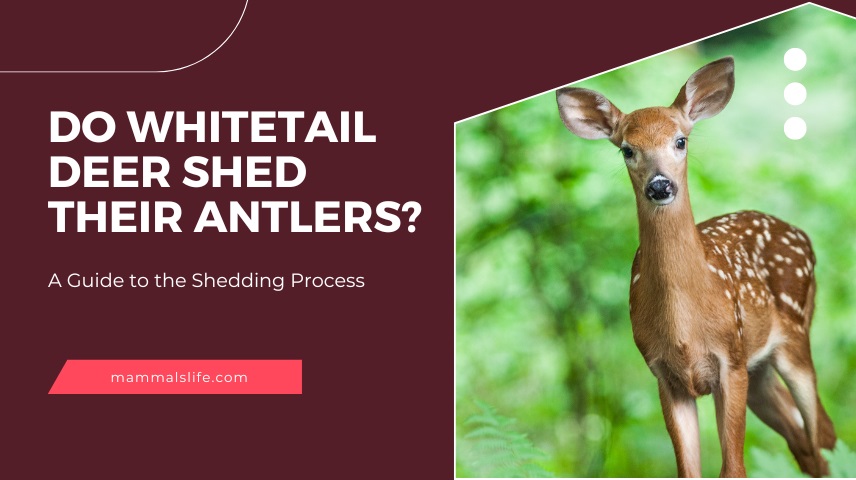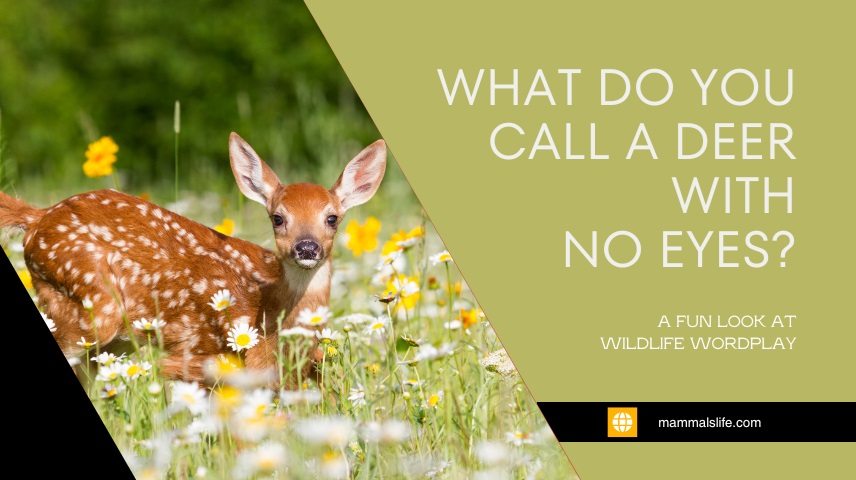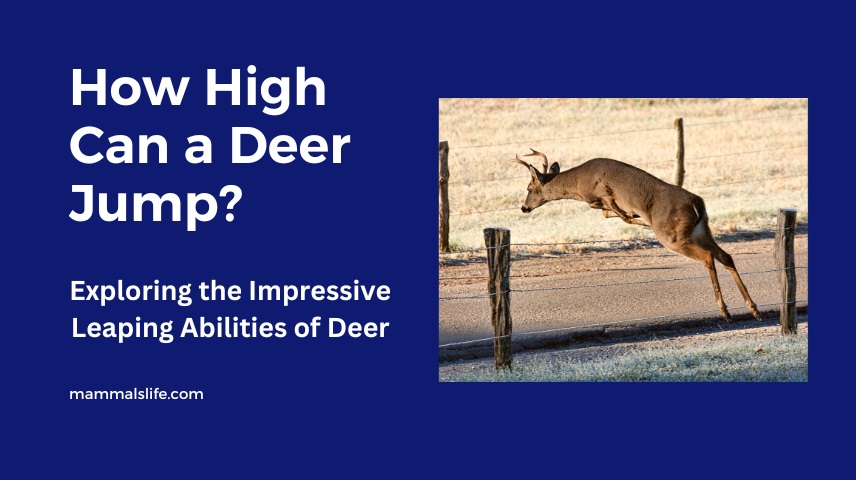Last Updated on February 22, 2025 by Mammals Life
Yes, whitetail deer shed their antlers annually. This process typically occurs in late winter.
Whitetail deer antler shedding is a fascinating natural phenomenon. Bucks grow new antlers each year, which helps them during mating season. This annual shedding allows for the growth of larger and more impressive antlers. The process begins as testosterone levels drop after the breeding season.
Antlers loosen and eventually fall off, usually in late winter. This cycle plays a crucial role in the deer’s health and survival. Understanding this process can help hunters, wildlife enthusiasts, and conservationists. Knowing the timing and reasons behind antler shedding provides valuable insights into deer behavior and ecology. This guide explores the intricacies of whitetail deer antler shedding.
The Life Cycle Of Whitetail Deer
Whitetail deer have a fascinating life cycle. Understanding it helps in knowing more about their antler-shedding process. Their life cycle includes various stages, each marked by unique behaviors and physical changes.
Growth Stages
Whitetail deer go through distinct growth stages:
- Fawn: They are born in spring and weigh around 6 pounds. Fawns have spots for camouflage.
- Yearling: By their first year, they lose their spots. They start growing their first set of antlers.
- Mature Deer: At 3-5 years, they reach full size. Antlers grow larger each year.
Seasonal Behaviors
Deer behavior changes with the seasons:
| Season | Behavior |
|---|---|
| Spring | Deer are active and feed more to recover from winter. |
| Summer | Antlers grow rapidly. Deer stay in shaded areas to stay cool. |
| Fall | Deer enter the rutting season. Bucks fight for mates. |
| Winter | Deer conserve energy. Bucks shed their antlers. |
Read More – What Is a Spike Deer? A Guide to Identifying Young Bucks
Why Deer Shed Their Antlers
Have you ever wondered why whitetail deer shed their antlers? The shedding process is fascinating. It involves both biological reasons and environmental factors. Let’s explore why deer lose their antlers each year.
Biological Reasons
Deer shed their antlers due to changes in hormones. These changes occur annually. Testosterone levels drop after the mating season. This decrease triggers antler shedding. The antlers become weak at the base.
As testosterone drops, cells called osteoclasts activate. These cells break down bone tissue. It happens at the antler base. This is called the pedicle. The antlers then fall off. New antlers start growing soon after. This cycle repeats every year.
Environmental Factors
Environmental factors also play a role in antler shedding. Daylight length affects hormone levels. Days get shorter after summer. This change impacts testosterone levels. The shift in light triggers the shedding process.
Nutrition is another factor. A deer’s diet influences antler growth and shedding. Poor nutrition can delay shedding. Good nutrition supports healthy antler growth. It ensures the shedding process goes smoothly.
| Factor | Influence on Shedding |
|---|---|
| Daylight Length | Triggers hormonal changes |
| Nutrition | Affects antler health and shedding timing |
Understanding these reasons helps us appreciate the natural cycle of deer. It shows how biology and environment work together. This process ensures the survival and health of whitetail deer.
When Shedding Occurs
Understanding when whitetail deer shed their antlers can be fascinating. The timing and process are influenced by several factors. This guide delves into the seasonal timing and how age and health impact the shedding process.
Seasonal Timing
The shedding of antlers typically happens in late winter. Most whitetail deer shed their antlers between January and March. The exact timing can vary slightly depending on the region and climate.
During this period, you might find antlers on the forest floor. The process is natural and occurs every year. As the daylight hours decrease, testosterone levels in bucks drop. This triggers the antler shedding process.
Age And Health Impact
The age and health of a deer play a significant role in antler shedding. Mature bucks tend to shed their antlers earlier than younger ones. Younger bucks might hold onto their antlers a bit longer.
Health is also crucial. A healthy deer will shed its antlers at the expected time. If a deer is stressed or malnourished, the shedding process might be delayed. In some cases, poor health can cause irregular shedding patterns.
The following table summarizes the key points:
| Factor | Impact on Shedding |
|---|---|
| Seasonal Timing | January to March |
| Age | Mature bucks shed earlier |
| Health | Healthy deer shed on time |
Understanding these factors can help you predict when deer in your area will shed their antlers.
Read More – How Smart Are Deer? Understanding Their Behavior And Adaptability
Signs Of Antler Shedding
Understanding the signs of antler shedding can help you spot this natural phenomenon. Whitetail deer shed their antlers annually. Here are the key indicators to watch for during this period.
Physical Indicators
As shedding time approaches, you’ll notice several physical changes in whitetail deer. These include:
- Loosening Antlers: The antlers appear to be loose and wobbly.
- Reddened Pedicles: The base of the antlers, called pedicles, turn red.
- Skin Irritation: You may see signs of irritation around the pedicle area.
These physical indicators are clear signs that the deer are ready to shed their antlers.
Behavioral Changes
Deer also exhibit behavioral changes during the antler-shedding process. Some common behaviors include:
- Frequent Head Shaking: Deer shake their heads more often to loosen antlers.
- Rubbing Antlers: They rub their antlers against trees or shrubs.
- Isolation: Bucks often isolate themselves from the herd.
Paying attention to these behaviors can help you identify when shedding is imminent.
The Shedding Process Explained
Whitetail deer shed their antlers annually. This process is natural and fascinating. Understanding the stages helps us appreciate these majestic creatures. Here, we explain the shedding process in detail.
Initial Signs
The shedding process starts with initial signs. Deer experiences hormonal changes that trigger antler shedding. These changes often occur in late winter. You may notice the antlers becoming loose. Bucks might rub their antlers against trees more frequently. This helps to weaken the antlers’ base.
Duration And Stages
The entire process takes several weeks. Let’s break down the duration and stages:
| Stage | Description |
|---|---|
| Early Signs | Hormonal changes begin. Antlers start to weaken. |
| Shedding | Antlers detach and fall off. This can happen quickly. |
| Post-Shedding | New antlers start to grow. This growth continues through spring and summer. |
During the early signs stage, bucks show increased rubbing behavior. This helps the antlers detach. The actual shedding usually happens within a few days. The post-shedding stage is crucial for new antler growth. Bucks will grow new antlers, larger than the previous ones.
- Initial hormonal changes trigger the process.
- Antlers weaken and detach.
- New antlers begin to grow.
Each year, the cycle repeats. This ensures the bucks have strong, healthy antlers.
Impact On Deer Population
Whitetail deer shed their antlers annually, influencing population dynamics and habitat interactions. Shedding marks a critical period for both deer and predators.
The shedding of antlers plays a vital role in whitetail deer population dynamics. This natural process affects various aspects of the ecosystem and hunting practices. Understanding these impacts helps in effective wildlife management and conservation.
Ecological Role
The shedding of antlers provides a rich source of calcium for many forest animals. Squirrels, mice, and other rodents gnaw on the shed antlers, benefitting from the nutrients. This recycling of nutrients supports the forest ecosystem.
| Animal | Benefit |
|---|---|
| Squirrels | Calcium for bones |
| Mice | Essential nutrients |
Antlers also play a role in soil health. As they decompose, they release minerals back into the ground. This helps in plant growth and maintains the balance in the ecosystem.
Read More – Are Deer Nocturnal Or Diurnal? Exploring Their Activity Patterns
Hunting Considerations
Understanding the shedding process is crucial for hunters. Deer without antlers are often harder to identify. This knowledge helps in making ethical hunting decisions and ensures the conservation of deer populations.
- Antlerless deer often do.
- Young bucks shed their antlers later.
Hunters need to recognize the signs of antler shedding. This includes observing the behavior and tracks of the deer. Ethical hunting practices contribute to maintaining a healthy deer population.
- Observe deer behavior.
- Check for antler drop zones.
Understanding these factors helps hunters make informed decisions. This ensures a balanced and sustainable deer population.
Frequently Asked Questions
What Triggers Antler Shedding?
Decreasing daylight and reduced testosterone levels trigger antler shedding in deer. These changes signal the end of the breeding season.
What Is The Process Of Deer Antler Shedding?
Deer antlers shed annually, usually in late winter. Hormone levels drop, weakening the connection. Antlers fall off naturally and regrow.
How Do Deer Know When To Shed Their Antlers?
Deer shed their antlers due to changes in daylight and hormone levels. Decreased daylight triggers a drop in testosterone.
What Happens If A Buck Doesn’t Shed Antlers?
A buck that doesn’t shed its antlers may suffer from hormonal imbalances or injuries. This can lead to infections or abnormal antler growth, impacting the buck’s health and mobility.
Do Whitetail Deer Shed Antlers Annually?
Yes, whitetail deer shed their antlers every year, typically in late winter or early spring.
Conclusion
Understanding the antler-shedding process of whitetail deer is fascinating. These beautiful creatures follow a natural cycle yearly. Knowing when and why they shed helps in wildlife observation. Enjoy watching these majestic animals and their seasonal changes. Stay curious and keep exploring the wonders of nature.











